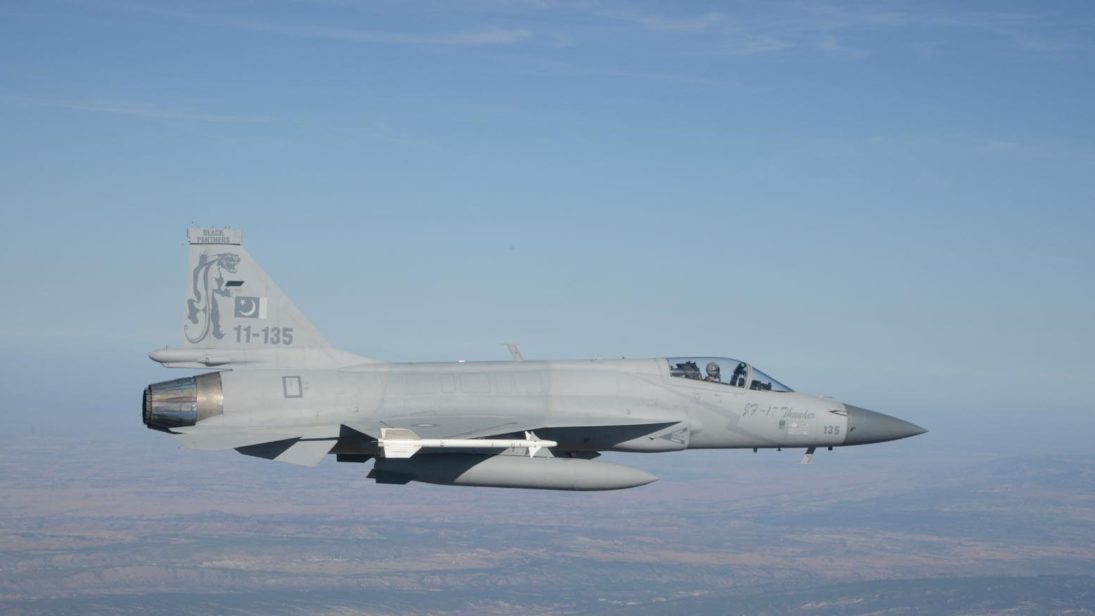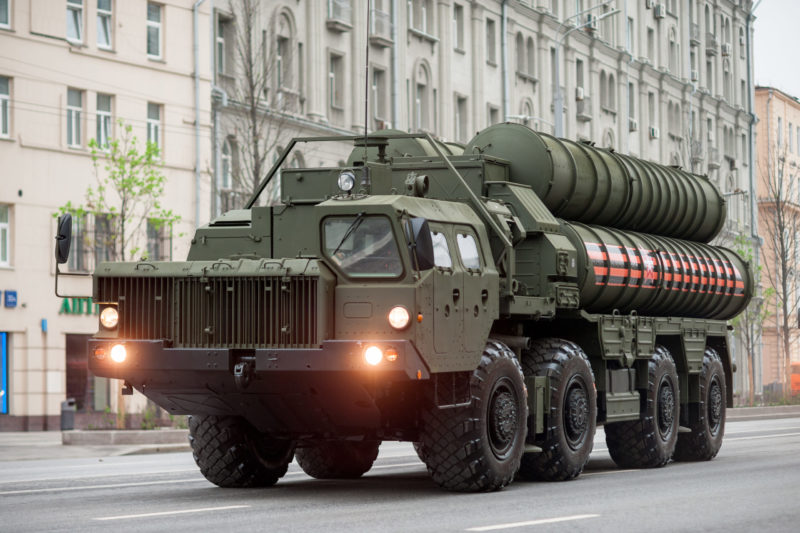
It has been a year since Pakistan and India’s most recent and most serious crisis after their overt nuclearization in 1998. However, tensions have far from subsided. In the past year, there have been increasing ceasefire violations on the Line of Control (LoC), and India’s leadership has appeared increasingly risk acceptant as seen through statements by Prime Minister Narendra Modi that India could end a war with Pakistan in seven to ten days, and claims to Pakistan-administered by India’s foreign minister and the army chief. On Pakistan’s part, Prime Minister Imran Khan has warned of the potential for rapid escalation due to India’s actions to change the status of the Kashmir dispute.
Given the ongoing tensions between India and Pakistan, it is important to ask what each side learned from the pivotal crisis last year—and to what extent these lessons coincide. On Pakistan’s side, the crisis offers several lessons including: (1) affirmation of the need for a full-spectrum deterrence doctrine, (2) that India’s desire to pursue kinetic options against Pakistan and the latter’s resolve to respond with “Quid Pro Quo Plus” could create the potential for dangerous escalation in the future, and (3) the growing risks of India’s rapid advancements in conventional capabilities and developing potential for preemptive counterforce.
Overview of the Crisis
The onset of the crisis was similar to many crises in the past—a suicide bombing in Indian-administered Jammu & Kashmir. In this instance, the attack was carried out by a Kashmiri youth hailing from Indian-administered Kashmir on a convoy of security vehicles, killing more than 40 of India’s Central Reserve Police Force personnel. The incident was blamed on Pakistan after Jaish-e-Mohammad (JeM), a militant group based out of but also banned in Pakistan, released a video claiming Dar’s association with JeM.
India’s desire to pursue kinetic options against Pakistan and the latter’s resolve to respond with “Quid Pro Quo Plus” could create the potential for dangerous escalation in the future.
Over two weeks later, on February 26, the Indian Airforce (IAF) carried out a strike across the international border with stand-off weapons. Many attributed this risk acceptance on India’s part to the upcoming national elections and shifts in Indian policy that were underway since after the Uri terrorist attack in September 2016. After Uri, India claimed that it had carried out “surgical strikes” along the Line of Control, which Pakistan vehemently disputed. However, Pakistan’s denial of those strikes and subsequent lack of response may have emboldened India to escalate after the Pulwama attack, and it was in this context that it seemed essential for Pakistan to respond after the Balakot strikes.
In the escalating tensions after the Pulwama attack, Pakistan’s highest political leadership had warned India against taking military action or else it would be forced to retaliate. Thus, although Pakistan disputed India’s claim that the airstrikes had hit a JeM militant base (since then, some Western analysts have indicated the same through the use of satellite imagery), the strike nonetheless posed a credibility dilemma for Pakistan, if it chose not to respond. Hence, on the morning of February 27, Pakistan’s Air Force (PAF) retaliated by striking across the Line of Control in the Rajouri sector of Kashmir, which resulted in an aerial dogfight between the two countries. Pakistan claimed it intentionally avoided targeting Indian military sites while establishing its capability and intention to strike back if India escalated further. It was Islamabad’s return of the Indian pilot captured after the aerial dogfight between the two countries that provided a face-saving measure to deescalate the crisis.
The “Nuclear Bluff” & “Quid Pro Quo Plus”
The Indian strategic community was quick to spin the Balakot narrative—claiming the strikes had “called Pakistan’s nuclear bluff,” suggesting that India was drawing the lesson that Pakistan’s nuclear deterrent had failed. From a Pakistani standpoint, however, this strategic assessment was misplaced. Indian claims that deterrence had failed put too much emphasis on the nuclear aspect of Pakistan’s full-spectrum deterrence (FSD) doctrine and assumed Pakistan’s over-reliance on Nasr, a low-yield short range missile (so called “tactical” nuclear weapon) developed to counter India’s provocative Cold Start Doctrine (CSD). While Pakistan’s FSD emphasizes the elements of nuclear force structure, the doctrine is also about use of conventional forces and is intended to cater to a full spectrum of threats—strategic, operational, and tactical. Readings of the crisis that argue that Pakistan’s “nuclear bluff” was called both misconstrue FSD and create a riskier environment for escalation in the future.
For Pakistan, the crisis in contrast affirmed its belief that FSD had successfully reinforced deterrence and put “cold water on ‘Cold Start.'” After almost two decades of war-gaming the doctrine, India did not deliberate on implementing CSD across the international border during the crisis, which strengthens the thinking in Pakistan that the Nasr might have been able to achieve credible deterrence against the threat of Indian limited land incursions.
Pakistan’s response to the Balakot strikes suggests that it would rely on its potent conventional options, which have been rehearsed in several military exercises, when retaliating to such cross-border strikes in the future. Pakistan’s current conventional deterrence strategy rests on a new warfighting concept, which entails developing an integrated response among the army, navy, and air force. The Azm-e-Nau exercises, High Mark drills, Strike of Thunder drills, and Sea Spark exercises demonstrate the practice of this concept for improving mobilization time as well as integration of operations across the three military branches. In a recent statement made by retired Lieutenant General Khalid Kidwai, the former Director General of Pakistan’s Strategic Plans Division and a current advisor to Pakistan’s National Command Authority, Pakistan would adopt a “Quid Pro Quo Plus” response to a conventional military strike from India. Perception in Pakistani strategic circles suggests that such an approach might deter India from initiating kinetic action against Pakistan or at the very least, keep hostilities limited.

Escalation Management: Lessons for Pakistan
Evidence that has emerged in the year after the crisis has indicated several “close calls” that could have led to even more dangerous levels of escalation. Much of this additional information has affirmed Pakistan’s convictions that India is becoming less risk averse. First, after the capture of the Indian pilot by Pakistan, India threatened a missile response—to which Pakistan promised missile launches in retaliation.
Second, soon after the crisis deescalated, an Indian submarine was reportedly forced to surface by the Pakistan Navy after detection, however it was not targeted. Had Pakistan targeted the submarine—either intentionally or in miscalculation—this would have been inherently escalatory and could have led to horizontally escalating the crisis across the naval domain. Finally, an Indian naval press conference in the aftermath of the Pulwama attack revealed that India had deployed its nuclear submarine, the Arihant, early in the crisis alongside its aircraft carrier and naval flotilla. This has bolstered the perception in Pakistan that India’s strategic elite were either playing up the idea of preemptive counterforce strikes or thinking of expanding the theater of offensive operations beyond air and ground to include the naval domain. The deployment of India’s nuclear platforms across the air and naval domains as well as the use of dual-use platforms for military missions, like the Mirage 2000 (which can carry nuclear payloads) and surface-to-air missiles (SAMs), reinforce the Pakistani perception that India is moving towards preemptive counterforce. The acquisition or pursuit of technologies that favor first use—such as ballistic missile defense, precision-guided munitions, hypersonic cruise missiles, and enhanced intelligence, surveillance, and reconnaissance (ISR) capabilities—would enhance India’s confidence that it can successfully carryout a decapitating counterforce strike against Pakistan in the future.
For Pakistan, the main lesson from the crisis seems to be that as long as it is able to ensure the validity of [full-spectrum deterrence doctrine]—both in terms of conventional as well as strategic capabilities—deterrence will hold.
An effective deterrence posture rests on credible conventional and strategic capability. A lesson from the recent crisis is that though the conventional asymmetry between Pakistan and India is not currently decisive, India’s advanced weapons purchases (including next generation fighter aircraft, supersonic vehicles, anti-submarine warfare, and platforms like the P-8I and the pending S-400), which India claims are aimed at China, will continue to be watched by Pakistani analysts in the future. The crisis has also offered an opportunity to the Indian defense forces to project their case for military modernization. In addition, the desire of foreign suppliers like the United States to prop India up against China may also lead to a heavy supply of military arms to Delhi. This may contribute to arms racing or greater instability in the region in the future.
Future Risks to Crisis Stability
For Pakistan, the main lesson from the crisis seems to be that as long as it is able to ensure the validity of FSD—both in terms of conventional as well as strategic capabilities—deterrence will hold. The recent crisis has demonstrated that India will keep on exploring ways to conduct kinetic options against Pakistan below the nuclear threshold, to which Pakistan would have to respond with a robust deterrence posture as reflected in its policy of “Quid Pro Quo Plus.”
This crisis has also shown a new use of air power as a means to execute a “limited response”—in both India’s retaliation for the Pulwama attack and Pakistan’s response thereafter. This is a dangerous addition to response options, owing to the speed of aerial battle and its rapid escalation potential. With the next generation of aircraft and rapid military modernization, the propensity for use of such air power will only increase. In this regard, Pakistan would have to invest in the technological modernization of its conventional forces to ensure deterrence against the entire threat spectrum in the future.
If the next crisis in South Asia has a similar pattern to this one, the risks for escalation could be even greater if India tries to find more means to “punish Pakistan” and Pakistan’s determination to show “resolve” in response. This potential for dangerous escalation suggests an imperative to develop stronger bilateral crisis management mechanisms to help defuse future crises.
Editor’s note: SAV contributors look back at the crisis between India and Pakistan last February that saw them exchange tit-for-tat airstrikes, and assess the key takeaways for both sides. Read the Indian perspective on this episode here.
***
Click here to read this article in Urdu.
Image 1: Government of Pakistan
Image 2: Dmitriy Fomin via Flickr


